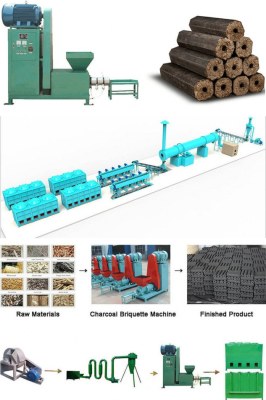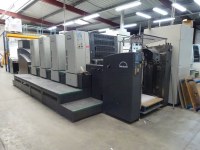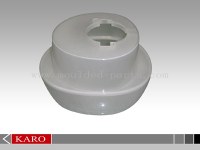Biomass briquettes, fuel substitues made through the compaction of bio-degradable waste such as sawdust or seed husks. Unlike the primitive hand made briquettes of the past, modern ones are made in special biomass sawdust briquette machine.
Materials Used For Biomass Briquette Making
You have two main sources of biomass for briquette making. The first is the agricultural sector. A vast amount of biomass produced in our farms sadly goes to waste. The seed husks and plant stalks you throw away can help bridge the deficit in energy supply if properly utilized. The second is the timber industry. By-products of saw mill, paper mill and logging operations such as sawdust are left to go to waste. But no longer, to tap into this wasted potential, sawdust briquette making units are sprouting the world over. It is this type of unit that we will discuss below.
Biomass Sawdust Briquette Making Units
If you walk into a biomass briquette making plant, you will find a series of machines designed to work together towards a common goal. Each machine can be operated independently if the need arises. Below is an outline of each stage in the briquette making process plus what each machine in the stage does.
Crushing
Your raw material is first crushed into the required size using a crusher known as a hammer mill. Once the particles are smaller than the recommended 3 millimetres, you are now ready for the next stage.
Drying
The crushed particles are conveyed to a dryer by a conveyor belt. In this stage, you remove excess moisture because despite drying your material in the sun, the moisture levels are still above the recommended 15 percent.
Conveying
Once the first two stages are done, you then convey your particles to the compaction machine via a conveyor belt.
Briquetting
You have a choice of two compactors depending on the intended final product. There is the charcoal briquette machine for making hollow briquettes and the punching press for solid ones.
Carbonization
After compaction, you can opt to fire the briquettes into charcoal. To do this, you place them in a sealed kiln and ignite them. 2 to 3 days later and after reaching temperatures of up to 700 degrees celcius, your product is ready for the last stage. Or put them in a carbonization furnace.
Benefits Of Briquette Making
Since communities living in remote areas heavily depend on wood and charcoal for their fuel needs, they inevitably deplete the forests around them. Providing them with affordable eco-friendly alternatives such as biomass briquettes not only meet their needs, it also saves the environment. Moreover, the money that would have otherwise been spent on fuel can now be used for personal development. Finally, charcoal briquette making plants provide locals with employment opportunities.
With today's world of high energy prices, affordable alternative forms of energy are needed maybe more than ever. Biomass sawdust briquette making units can ease the burden on the world's energy reserves. Since the technology and know how exist, all that now remains is the will to utilize what could possibly change the world for many impoverished people.
Location : No.45 Agricultural Road, Jinshui District, Zhengzhou, Henan China, 450003 Zhengzhou,
Contact : Yan Amy, +8615838279423








